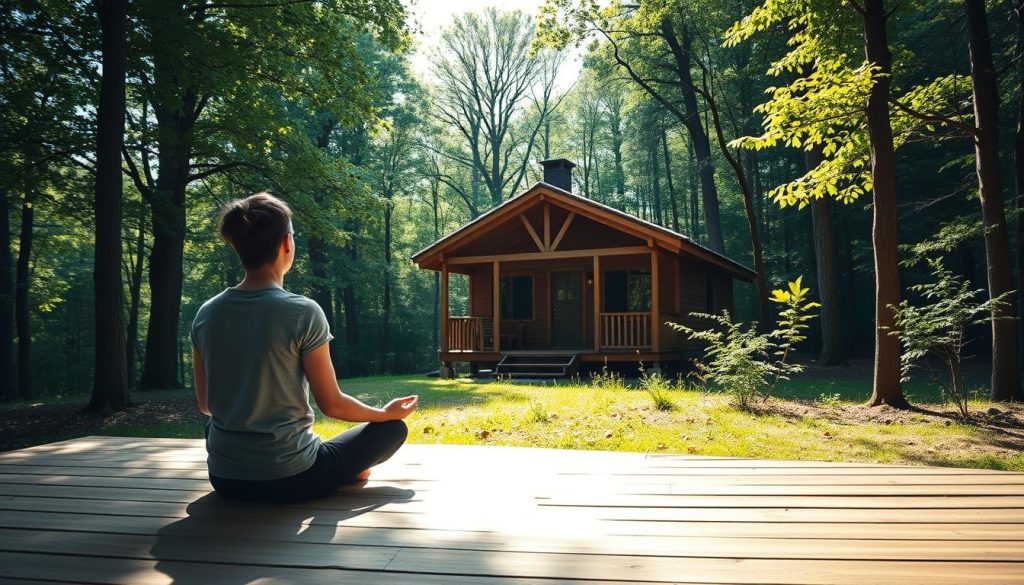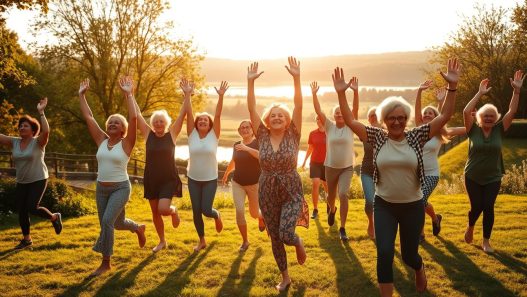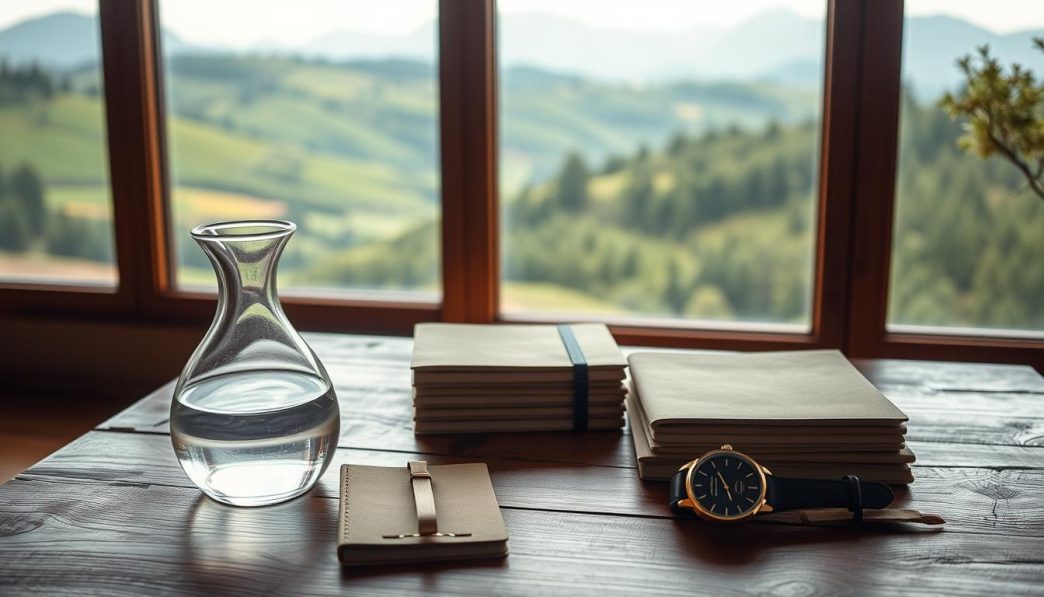Something profound is happening in coffee shops, parks, and living rooms across America. People are closing laptops, silencing notifications, and reaching for physical books. This cultural shift isn’t about abandoning technology—it’s about redefining what true balance looks like in our hyper-connected era.
The Global Wellness Summit’s latest report confirms what many feel intuitively: there’s growing momentum toward tactile, screen-free experiences. Nearly 60% of survey respondents now actively schedule device-free time, with “intentional disconnection” becoming a common calendar entry.
What makes this movement different from past detox attempts? It’s not a weekend cleanse but a fundamental lifestyle recalibration. Families establish phone-free dinners. Companies design low-tech retreat spaces. Urban planners create WiFi-free zones in public parks.
Key Takeaways
- Cultural shift toward tactile experiences outpaces temporary digital breaks
- Mainstream recognition from global health organizations signals lasting change
- New infrastructure supports sustained device-free living
- Mental clarity drives demand for analog alternatives
- Cross-industry adaptations reveal economic significance
- Multi-generational appeal challenges tech-native stereotypes
This trend’s staying power comes from its flexibility. Some embrace vintage record players for musical immersion. Others rediscover handwritten journals. What unites participants is the conscious choice to engage senses beyond glowing rectangles—and the collective sigh of relief that follows.
Understanding Analog Wellness
From morning routines to evening unwind, a new rhythm is emerging that values touch over taps. This approach to living focuses on sensory engagement rather than screen dependency, creating space for activities that spark creativity and foster real bonds.
Defining Wellness Beyond Screens
Unlike short-term tech breaks, this lifestyle shift roots itself in daily choices. Think shared meals without devices, handwritten letters, or group hikes where nature replaces notifications. These intentional moments activate senses often numbed by endless scrolling.
Research reveals tactile actions like gardening or painting lower stress hormones by up to 28%. This explains why community workshops for pottery and woodworking now rival yoga studios in popularity. People crave experiences where progress is measured in brushstrokes, not likes.
From Past Trends to Present Movement
Early internet-era detoxes focused on abstinence. Today’s approach blends old and new—using apps to schedule offline hours or streaming nature sounds while journaling. Urban libraries now host “device-free zones” with typewriters and board games, proving balance is possible.
This resurgence isn’t nostalgia—it’s neuroscience. Studies show hands-on activities stimulate brain regions linked to calm focus. As one Brooklyn café owner notes: “People don’t want to escape technology. They want to remember how to live without it sometimes.”
Analog Wellness: Why Digital Detox is Going Mainstream in 2025
Modern life’s endless pings and scrolls are sparking a biological rebellion. Research reveals 72% of adults experience eye strain from screens, while 68% report sleep disruptions. This isn’t just fatigue—it’s our bodies sounding alarms about unsustainable habits.

Key Drivers Behind the Trend
Neuroscience confirms what many feel: constant device use shrinks attention spans. A UCLA study found heavy screen users struggle with focus 40% more than occasional users. “We’re training our brains to crave novelty every 15 seconds,” explains Dr. Lena Torres, cognitive behavioral researcher.
| Impact Area | Digital Experience | Analog Alternative |
|---|---|---|
| Attention Span | 52 sec average focus | 22 min sustained focus |
| Sleep Quality | 47% report insomnia | 83% improve with screens off |
| Social Connection | 1.2 hrs/day messaging | 3.4x more in-person talks |
| Stress Levels | 68% feel overwhelmed | 54% reduction with tactile activities |
Consumer Shift Toward Tactile and Sensory Experiences
Handwritten journals outsold planners last quarter. Cooking classes see 112% enrollment spikes. Why? Physical tasks create measurable progress—a stark contrast to infinite social media feeds. “Baking bread gives me control algorithms can’t disrupt,” shares NYC resident Marco Silva.
This movement isn’t anti-tech—it’s pro-balance. Apps now help schedule offline hours, while smartwatches remind users to breathe. The goal? Make device use intentional instead of automatic.
Digital Detox Retreats and the Rise of Offline Experiences
Imagine waking up to birdsong instead of notifications—a reality millions now seek through structured escapes. The retreat industry has transformed silent forests and mountain cabins into hubs for intentional living, where check-ins require surrendering devices.

Curated Wellness Retreats: A New Norm
What began as rustic cabins now features luxury eco-resorts with purpose-built disconnection spaces. A 2024 survey shows 41% of travelers prioritize destinations with enforced tech boundaries. Popular programs blend:
| Retreat Type | Core Activities | Avg. Stay |
|---|---|---|
| Nature Immersion | Guided hikes, wildlife tracking | 5 days |
| Creative Renewal | Pottery, watercolor workshops | 7 days |
| Silent Reflection | Meditation, journaling | 3 days |
One participant notes: “By day three, I stopped reaching for my phantom phone. My brain finally relaxed.”
Fostering Meaningful, Screen-Free Interactions
Communal meals become relationship incubators when bread gets passed instead of memes. Retreat designers use techniques like:
- Shared cooking challenges with handwritten recipes
- Sunrise yoga sessions without photography
- Campfire storytelling circles
This shift proves temporary disconnection creates lasting connections. As one Oregon retreat owner observes: “Guests arrive as strangers, leave as allies against digital overwhelm.”
Mental Health and the Impact of Screen Overload
Constant notifications aren’t just interrupting our days—they’re rewiring our brains. Recent studies reveal that adults spending 6+ hours daily on screens are 53% more likely to experience mood swings. This isn’t casual distraction—it’s a neurological shift with real consequences.
Digital Addiction and Emotional Wellbeing
Clinics now see patients reporting “phantom vibration syndrome”—the sensation of phone alerts that never happened. Research links compulsive scrolling to reduced gray matter in brain regions governing empathy. One therapist notes: “Patients describe feeling trapped in a loop of checking devices, even when it worsens their anxiety.”
Key concerns include:
- Sleep disruptions from blue light exposure doubling insomnia rates since 2020
- Social media comparison triggering depressive symptoms in 42% of young adults
- Attention fragmentation making sustained focus feel physically uncomfortable
Therapeutic Benefits of Disconnecting
Forward-thinking clinics now prescribe “device fasting” alongside traditional treatments. A 2024 Johns Hopkins trial found patients combining therapy with weekly tech breaks improved 37% faster. The secret? Uninterrupted time allows brains to reset stress responses.
Participants report unexpected joys:
- Rediscovering hobbies that require manual skill (knitting, gardening)
- Improved memory recall from reduced cognitive overload
- Stronger relationships through undistracted conversations
As one recovery program director explains: “When screens stop dictating the rhythm, people remember how to breathe.” This isn’t about rejecting technology—it’s about reclaiming mental space.
Tech, Trends, and the Cultural Shift Towards Sensory Living
In a twist of modern irony, the very platforms fueling screen addiction now teach users to unplug. Viral TikTok tutorials demonstrate journaling techniques, while Instagram reels promote silent retreats—all before viewers tap “screen off.” This paradox defines today’s cultural pivot: we’re using technology to rediscover life beyond it.
Media Influence and the Offline Movement
Major platforms have become unlikely allies in the analog revival. YouTube meditation guides rack up millions of views, while productivity apps like Forest gamify staying phone-free. One user shares: “My favorite detox tool came from a sponsored post I almost skipped.”
The rise of “sensehacking” reveals deeper priorities. People combine sound baths with smartwatch breath reminders, blending old and new wellness practices. Data shows:
- 63% of Gen Z now attend events promoting tactile experiences
- Downloads of digital wellbeing tools increased 240% since 2023
- 57% of users feel more creative after sensory-focused activities
This movement’s beauty lies in its adaptability. A Brooklyn designer explains: “I use color therapy apps to choose paints for my actual walls.” It’s not about rejecting tech—it’s about making it serve human needs, not the other way around.
Future of Wellness: Integrating Technology with Nature
Tomorrow’s health revolution blooms where circuits meet soil. Forward-thinking communities are designing spaces that blend smart sensors with wildflower meadows, proving tech and nature can coexist harmoniously. This fusion creates environments where wearables track forest bathing sessions, and meditation apps guide users to nearby parks.
Innovative Solutions for Balanced Living
New tools help people reclaim control without abandoning progress. Apps now convert screen-free hours into charity donations, while biohacking devices measure stress reduction during pottery classes. Schools pilot programs teaching kids to balance devices with dirt-between-fingers exploration.
Regenerative Health Practices Gain Momentum
Cold plunges and adaptogenic teas are becoming household staples. Urban farms partner with hospitals to prescribe gardening as therapy. One Arizona retreat combines infrared saunas with cactus cultivation workshops—proof that healing thrives when modern science honors ancient wisdom.
As global wellness organizations set new standards, workplaces trial “quiet Wednesdays.” Friends compare sunrise walks instead of step counts. This shift isn’t about choosing between screens and streams—it’s about crafting a life where both serve our deepest human needs.






